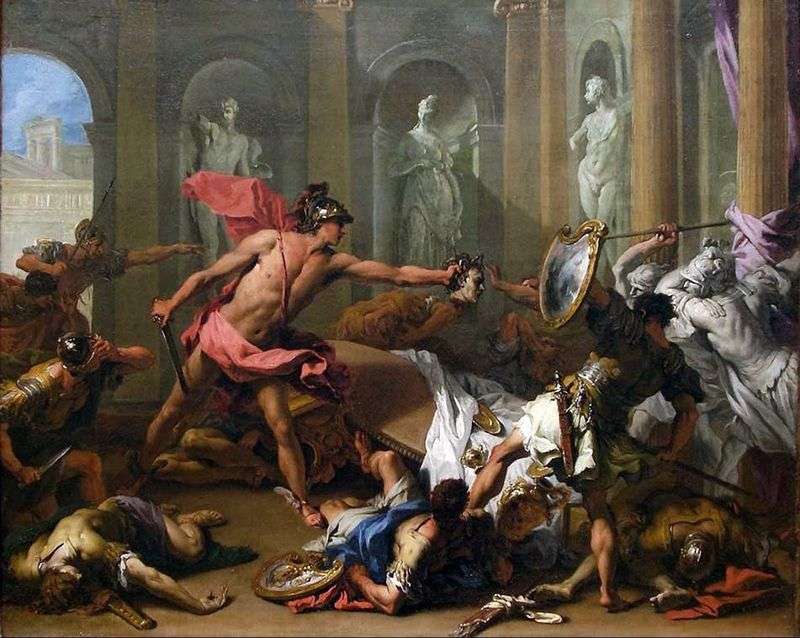
Painting of the Italian painter Caravaggio “Medusa Gorgona”. The size of the painting is 60 x 56 cm, the canvas is stretched over the shield, oil. The artist was commissioned by Cardinal Francesco Maria del Monte, intending to present it as a gift to Ferdinand, the Grand Duke of Tuscany.
Gorgons, in the Greek mythology of the female monster. Homer in the Iliad narrates that the head of the Gorgon is on the auspices of Zeus, and in the Odyssey the gorgons are represented as horrors of the underworld of Hades. Both Homer and Euripides, according to whose story the Gorgon was born of the earth and killed by the goddess Athena, is a Gorgon; Meanwhile, Hesiod has three of them, living overseas in the west. Later writers refer to the presence of gorgon in Libya and adjacent African lands.
Gorgons are represented in the form of winged creatures with a disproportionately large head, sticking out their tongue, bared teeth and often with snakes on their heads or trunks. Of them, Medusa, which is mainly called simply Gorgon, was the most terrible. She alone was mortal, why Perseus could cut off her head. From her blood, fertilized by Poseidon, the winged horse Pegasus was born. The head of Medusa petrified all who looked at it or touched it.
Fine art for a long time portrayed it in a hideous form, but later, after Pindar, whom she represented beautiful, the artists began to portray her as beautiful, though terrifying, usually with wings over her temples and snakes in her hair. Externally, the horrible warrior portrayed by artists in the late Middle Ages and the Renaissance was gradually replaced by images of the terrible expression of a beautiful face. The best picture, depicting Medusa Gorgon, is the work of Michelangelo Merisi da Caravaggio.
 Medusa Gorgona – Michelangelo Merisi da Caravaggio
Medusa Gorgona – Michelangelo Merisi da Caravaggio Penitent Magdalene by Michelangelo Merisi and Caravaggio
Penitent Magdalene by Michelangelo Merisi and Caravaggio The sacrifice of Isaac by Michelangelo Merisi and Caravaggio
The sacrifice of Isaac by Michelangelo Merisi and Caravaggio Perseus converts Phineas to stone by Sebastiano Ricci
Perseus converts Phineas to stone by Sebastiano Ricci Rest on the way to Egypt by Michelangelo Merisi da Caravaggio
Rest on the way to Egypt by Michelangelo Merisi da Caravaggio Fortune-teller by Michelangelo Merisi da Caravaggio
Fortune-teller by Michelangelo Merisi da Caravaggio Saint Matthew and the Angel by Michelangelo Merisi and Caravaggio
Saint Matthew and the Angel by Michelangelo Merisi and Caravaggio The ecstasy of St. Francis by Michelangelo Merisi and Caravaggio
The ecstasy of St. Francis by Michelangelo Merisi and Caravaggio